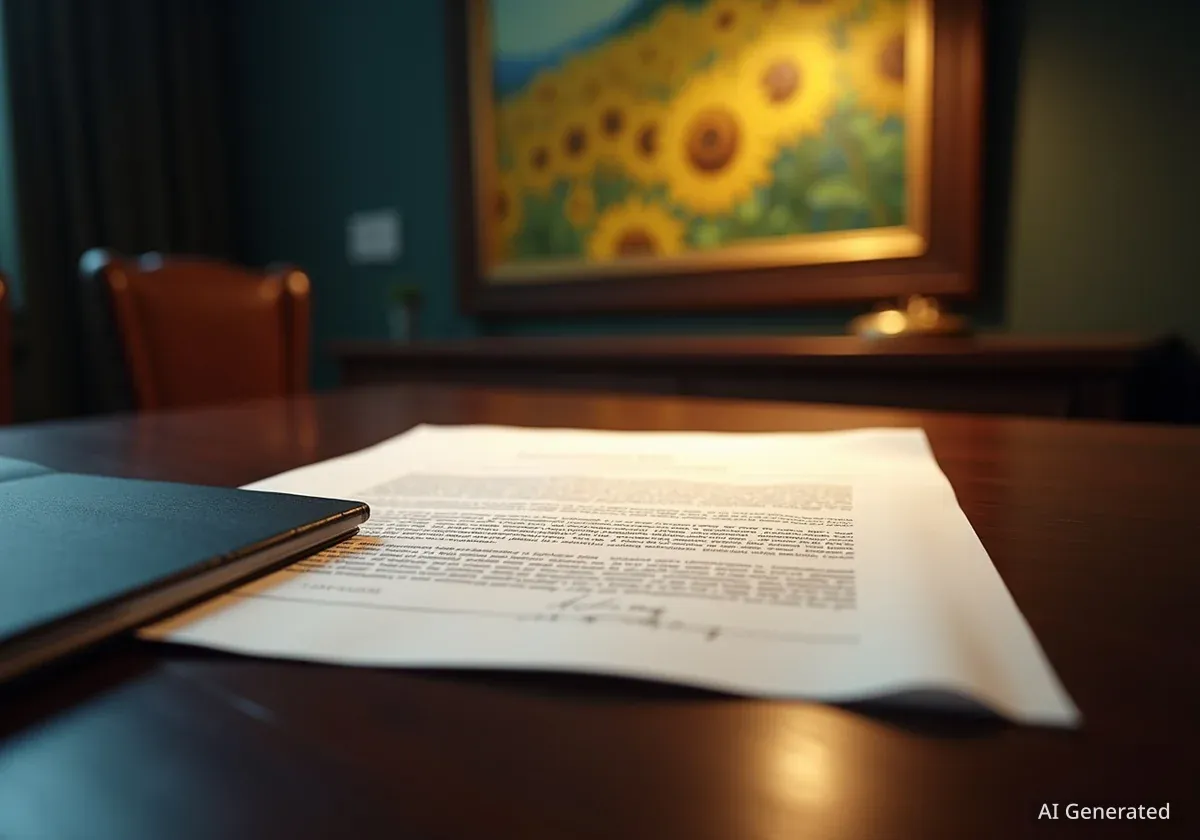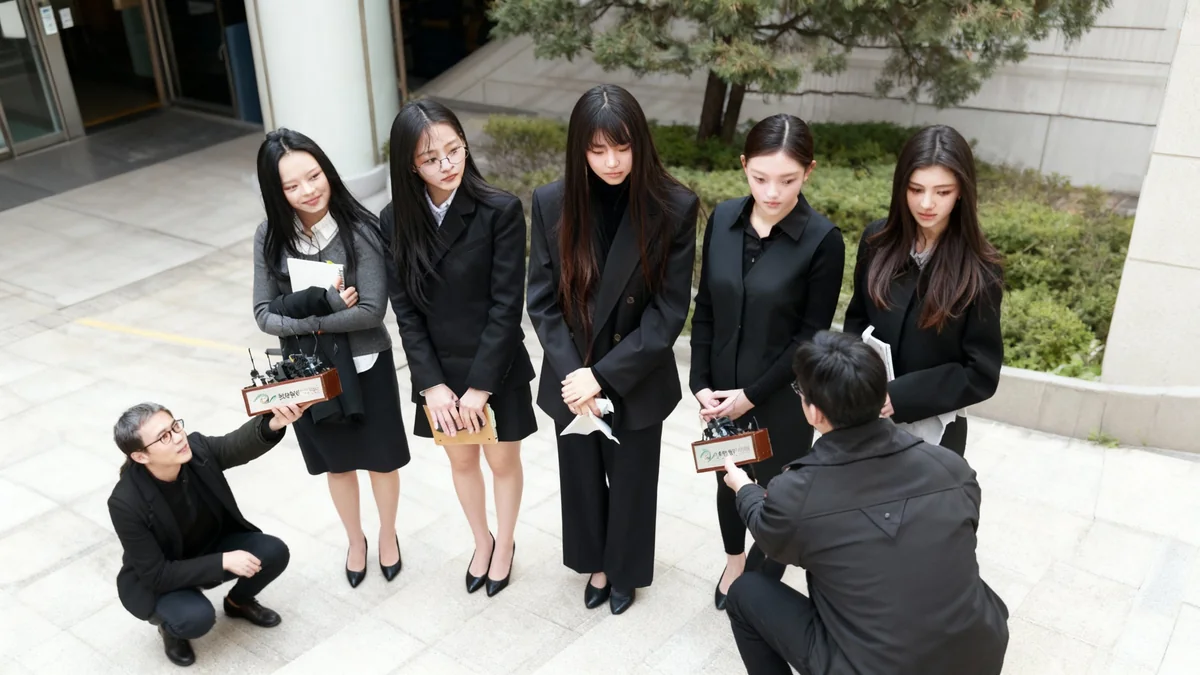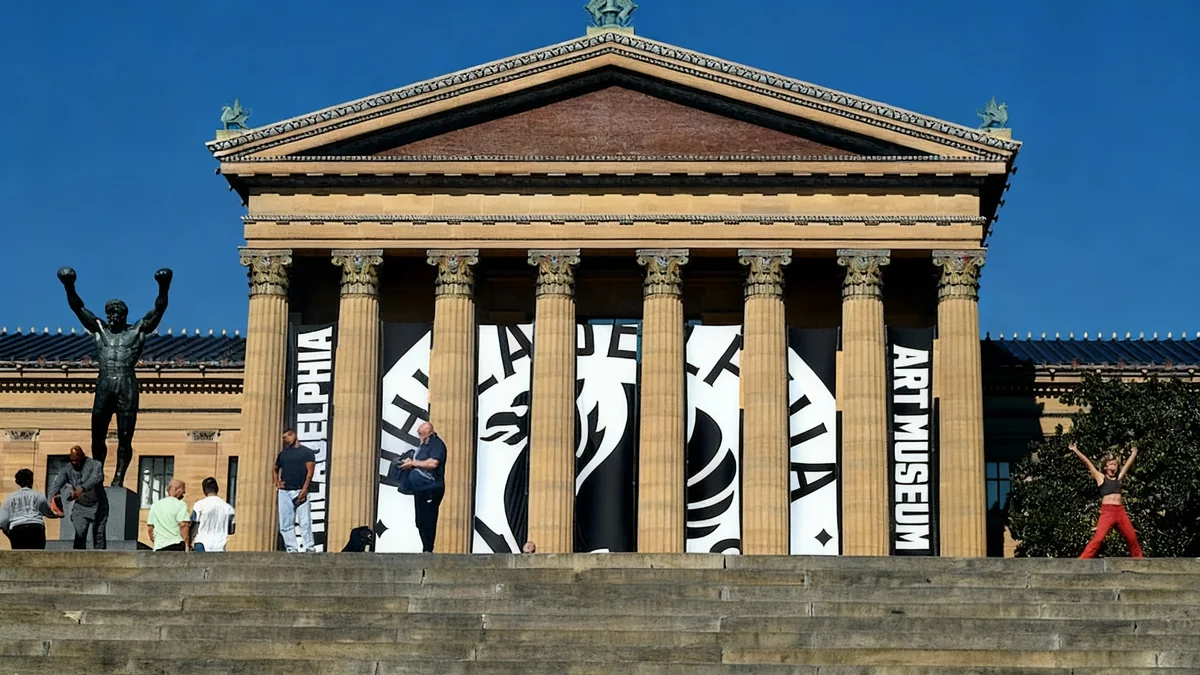The heirs of Paul von Mendelssohn-Bartholdy, a Jewish banker and art collector, are continuing their legal efforts to reclaim Vincent van Gogh's painting Sunflowers (1888-89). The artwork is currently valued at an estimated $250 million. This legal battle involves a Japanese insurance company, Sompo Holdings, and centers on claims that the painting was sold under duress during the Nazi era.
Key Takeaways
- Heirs of Paul von Mendelssohn-Bartholdy seek the return of Van Gogh's Sunflowers.
- The painting, valued at $250 million, is currently owned by Sompo Holdings.
- Heirs claim the 1934 sale was forced by the Nazi regime.
- A lower court dismissed the case, but the heirs have appealed.
- The legal dispute involves the 2016 Holocaust Expropriated Art Recovery (HEAR) Act.
Legal Battle Over Van Gogh's Masterpiece
The plaintiffs, including Julius H. Schoeps, Britt-Marie Enhoerning, and Florence von Kesselstatt, represent over 30 beneficiaries. They initiated a lawsuit against Sompo Holdings in 2022. Their core argument is that their ancestor, Paul von Mendelssohn-Bartholdy, was compelled to sell the painting in 1934 due to pressure from the Nazi regime. This alleged forced sale is central to their claim.
In June 2024, a lower court dismissed their case. However, the heirs quickly filed an appeal. They presented their arguments to a three-judge panel at the US Court of Appeals for the Seventh Circuit on September 17. This information was reported by Courthouse News.
Painting Details
- Artist: Vincent van Gogh
- Title: Sunflowers
- Creation Date: 1888-89
- Estimated Value: $250 million
- Current Location: Sompo Museum of Art, Tokyo
Sompo Holdings' Acquisition and Provenance Issues
Sompo Holdings, previously known as Yasuda, acquired the Sunflowers painting in 1987. The purchase occurred at a Christie's auction in London for a then-record price of $25 million. The heirs claim that Yasuda, the corporate entity at the time, did not properly acknowledge provenance evidence. This evidence, according to the heirs, clearly identified Paul von Mendelssohn-Bartholdy as a previous owner of the artwork.
Today, the painting is a centerpiece at the Sompo Museum of Art in Tokyo. It is one of three Sunflowers paintings created by Van Gogh between 1888 and 1889. The other two famous versions are displayed at London's National Gallery and the Van Gogh Museum in Amsterdam. The existence of these multiple versions highlights the significance of this series in Van Gogh's body of work.
The Nazi Era and Art Looting
During the Nazi regime (1933-1945), millions of artworks, books, and cultural objects were looted or forcibly sold from Jewish individuals and institutions. The Nazis systematically targeted Jewish collectors, forcing them to sell their possessions at low prices or confiscating them outright. Efforts to return these items to their rightful owners have been ongoing for decades, often facing complex legal and historical challenges.
The Holocaust Expropriated Art Recovery (HEAR) Act
The heirs filed their lawsuit against Sompo Holdings under the 2016 Holocaust Expropriated Art Recovery (HEAR) Act. This act aims to help victims of Nazi persecution and their heirs recover art that was stolen or sold under duress during that period. A significant part of the heirs' claim seeks to recover monetary value. This value is derived from an exhibition featuring the painting at the Art Institute of Chicago, titled Van Gogh and Gauguin: The Studio of the South (2001-02).
During the September 17 hearing, Thomas Hamilton, a lawyer representing the heirs, spoke to the judges. He described the situation as a "devil’s bargain." Hamilton explained that this type of bargain involves a party gaining "some illicit advantage or power, that promises great wealth and fame, forfeits its authentic identity and mortgages its future." This statement underscores the moral and ethical dimensions of the case, beyond just legal technicalities.
"It’s specifically focused on eliminating statue of limitations for a specific period of time for causes of action, either federal or state causes of action. That’s it."
Arguments Presented in the Appeal
Heirs' Arguments
In their appellate brief, the heirs emphasized the broad reach of the HEAR Act. They argued that the act requires federal courts to use their "maximal judicial authority and discretion." This includes both hearing and resolving these claims "expeditiously, fairly and on their substantive merits." They believe the act provides a strong legal basis for their case.
The heirs also stated that the HEAR Act represents a "diplomatic commitment" to the 2009 Terezin Declaration. The Terezin Declaration is a non-binding international agreement. Signatory governments agreed to speed up the return of art looted by Nazis. The heirs' representatives also challenged the lower court’s dismissal. The lower court cited a lack of "suit-related contacts" with Illinois. However, the heirs argued that a physical Sompo Holdings office in Chicago was enough to establish a connection.
Sompo's Counterarguments
Daniel Graham, a lawyer for Sompo, presented counterarguments. He contended that because Mendelssohn-Bartholdy sold the painting at auction, it does not meet the definition of "Nazi-confiscated" art. This distinction is crucial to Sompo's defense. Graham further stated that the heirs' legal team misrepresented the HEAR Act's purpose.
According to Courthouse News, Graham clarified the act's scope. He said, "It’s specifically focused on eliminating statue of limitations for a specific period of time for causes of action, either federal or state causes of action. That’s it." He emphasized that the act did not create new common law claims or causes of action. In fact, he stated, "Congress explicitly said, it cannot."
Terezin Declaration and Diplomatic Commitments
Hamilton, representing the heirs, maintained that the Terezin Declaration is an executive agreement. He argued that it has the full backing of Congress. Therefore, it should operate with the full foreign policy authority of the United States. Hamilton dismissed the "nonbinding" aspect of the Terezin Declaration as a "red herring," implying it was a distraction from its true intent and impact.
The panel of judges has not yet issued a ruling on the appeal. They have also not indicated when they might deliver their decision. The outcome of this case could set important precedents for future claims involving art looted during the Nazi era, especially those involving international parties and the interpretation of the HEAR Act.
- Legal Landmark: This case tests the international reach and interpretation of the HEAR Act.
- Historical Context: It highlights the ongoing efforts to address injustices of the Nazi regime.
- Art Market Impact: The decision could influence how art provenance is scrutinized in future high-value sales.




